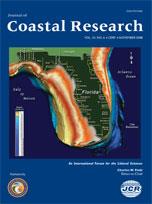In the present study, a spectral analysis was applied to field data and a numerical model of southeastern Everglades and northeastern Florida Bay that involved computing and comparing the power spectrum of simulated and measured flows at the primary coastal outflow creek. Four dominant power frequencies, corresponding to the S1, S2, M2, and O1 tidal periods, were apparent in the measured outflows. The model seemed to reproduce the magnitudes of the S1 and S2 components better than those of the M2 and O1 components. To determine the cause of the relatively poor representation of the M2 and O1 components, we created a steady-base version of the model by setting the time-varying forcing functions—rainfall, evapotranspiration, wind, and inland and tidal boundary conditions—to averaged values. The steady-base model was then modified to produce multiple simulations with only one time-varying forcing function for each model run. These experimental simulations approximated the individual effects of each forcing function on the system.
The spectral analysis of the experimental simulations indicated that temporal fluctuations in rainfall, evapotranspiration, and inland water level and discharge boundaries have negligible effects on coastal creek flow fluctuations with periods of less than 48 hours. The tidal boundary seems to be the only forcing function inducing the M2 and O1 frequency flow fluctuations in the creek. An analytical formulation was developed, relating the errors induced by the tidal water-level gauge resolution to the errors in the simulated discharge fluctuations at the coastal creek. This formulation yielded a discharge-fluctuation error similar in magnitude to the errors observed when comparing the spectrum of the simulated and measured discharge. The dominant source of error in the simulation of discharge fluctuation magnitude is most likely the resolution of the water-level gauges used to create the model boundary.





